Layne Berry
SpeechCLIP+: Self-supervised multi-task representation learning for speech via CLIP and speech-image data
Feb 10, 2024Abstract:The recently proposed visually grounded speech model SpeechCLIP is an innovative framework that bridges speech and text through images via CLIP without relying on text transcription. On this basis, this paper introduces two extensions to SpeechCLIP. First, we apply the Continuous Integrate-and-Fire (CIF) module to replace a fixed number of CLS tokens in the cascaded architecture. Second, we propose a new hybrid architecture that merges the cascaded and parallel architectures of SpeechCLIP into a multi-task learning framework. Our experimental evaluation is performed on the Flickr8k and SpokenCOCO datasets. The results show that in the speech keyword extraction task, the CIF-based cascaded SpeechCLIP model outperforms the previous cascaded SpeechCLIP model using a fixed number of CLS tokens. Furthermore, through our hybrid architecture, cascaded task learning boosts the performance of the parallel branch in image-speech retrieval tasks.
Integrating Self-supervised Speech Model with Pseudo Word-level Targets from Visually-grounded Speech Model
Feb 08, 2024Abstract:Recent advances in self-supervised speech models have shown significant improvement in many downstream tasks. However, these models predominantly centered on frame-level training objectives, which can fall short in spoken language understanding tasks that require semantic comprehension. Existing works often rely on additional speech-text data as intermediate targets, which is costly in the real-world setting. To address this challenge, we propose Pseudo-Word HuBERT (PW-HuBERT), a framework that integrates pseudo word-level targets into the training process, where the targets are derived from a visually-ground speech model, notably eliminating the need for speech-text paired data. Our experimental results on four spoken language understanding (SLU) benchmarks suggest the superiority of our model in capturing semantic information.
AV-SUPERB: A Multi-Task Evaluation Benchmark for Audio-Visual Representation Models
Sep 19, 2023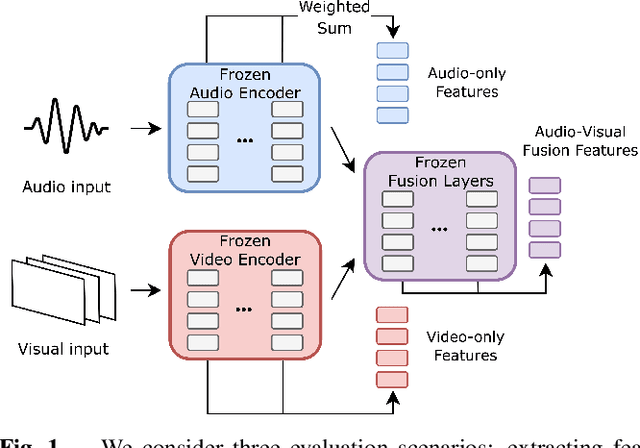
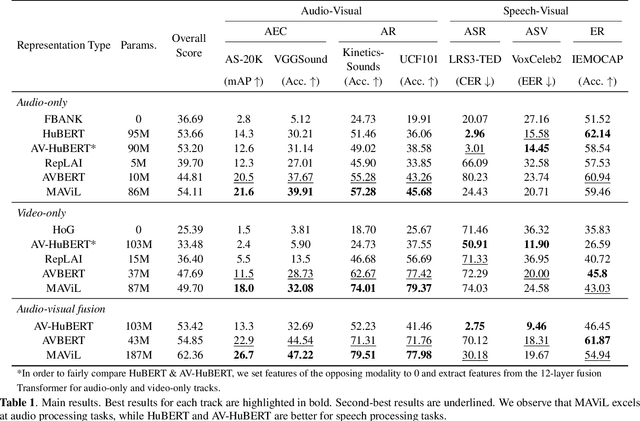
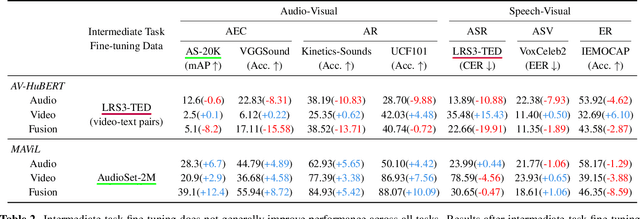
Abstract:Audio-visual representation learning aims to develop systems with human-like perception by utilizing correlation between auditory and visual information. However, current models often focus on a limited set of tasks, and generalization abilities of learned representations are unclear. To this end, we propose the AV-SUPERB benchmark that enables general-purpose evaluation of unimodal audio/visual and bimodal fusion representations on 7 datasets covering 5 audio-visual tasks in speech and audio processing. We evaluate 5 recent self-supervised models and show that none of these models generalize to all tasks, emphasizing the need for future study on improving universal model performance. In addition, we show that representations may be improved with intermediate-task fine-tuning and audio event classification with AudioSet serves as a strong intermediate task. We release our benchmark with evaluation code and a model submission platform to encourage further research in audio-visual learning.
Why is Winoground Hard? Investigating Failures in Visuolinguistic Compositionality
Nov 11, 2022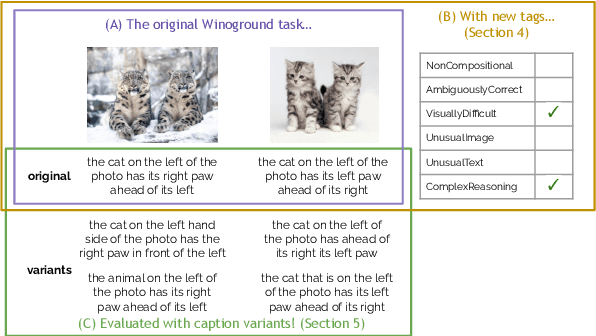


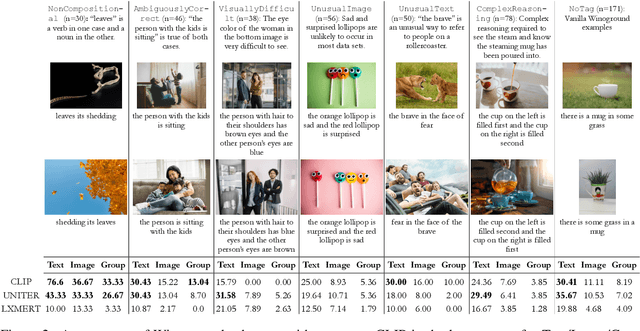
Abstract:Recent visuolinguistic pre-trained models show promising progress on various end tasks such as image retrieval and video captioning. Yet, they fail miserably on the recently proposed Winoground dataset, which challenges models to match paired images and English captions, with items constructed to overlap lexically but differ in meaning (e.g., "there is a mug in some grass" vs. "there is some grass in a mug"). By annotating the dataset using new fine-grained tags, we show that solving the Winoground task requires not just compositional language understanding, but a host of other abilities like commonsense reasoning or locating small, out-of-focus objects in low-resolution images. In this paper, we identify the dataset's main challenges through a suite of experiments on related tasks (probing task, image retrieval task), data augmentation, and manual inspection of the dataset. Our analysis suggests that a main challenge in visuolinguistic models may lie in fusing visual and textual representations, rather than in compositional language understanding. We release our annotation and code at https://github.com/ajd12342/why-winoground-hard .
M-SpeechCLIP: Leveraging Large-Scale, Pre-Trained Models for Multilingual Speech to Image Retrieval
Nov 02, 2022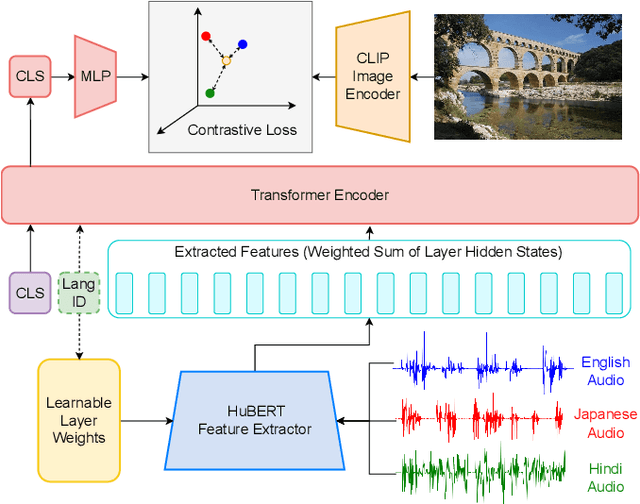
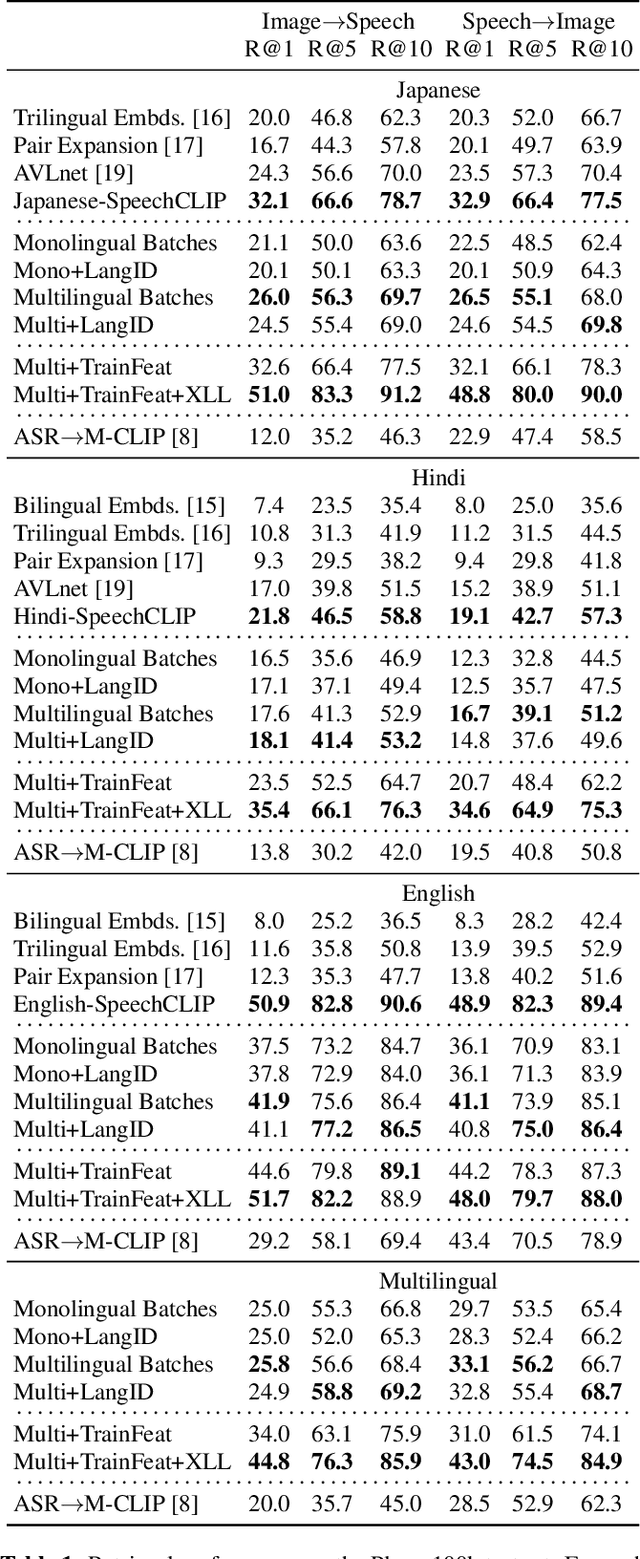
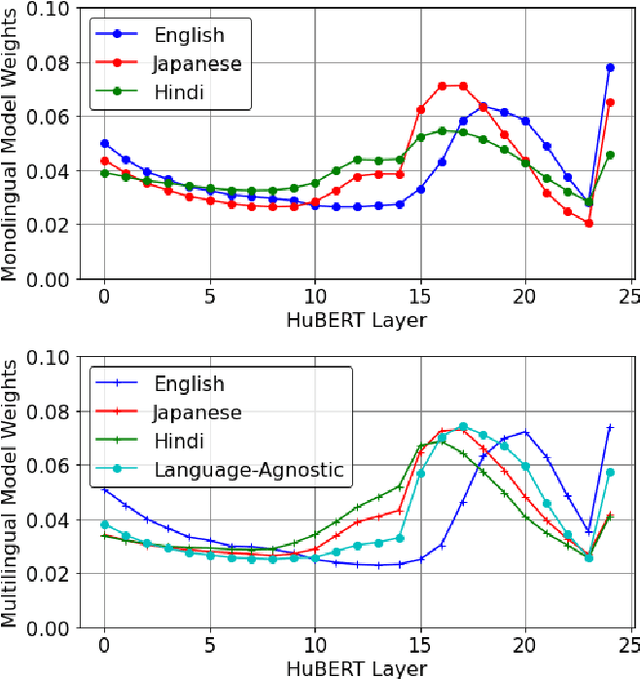
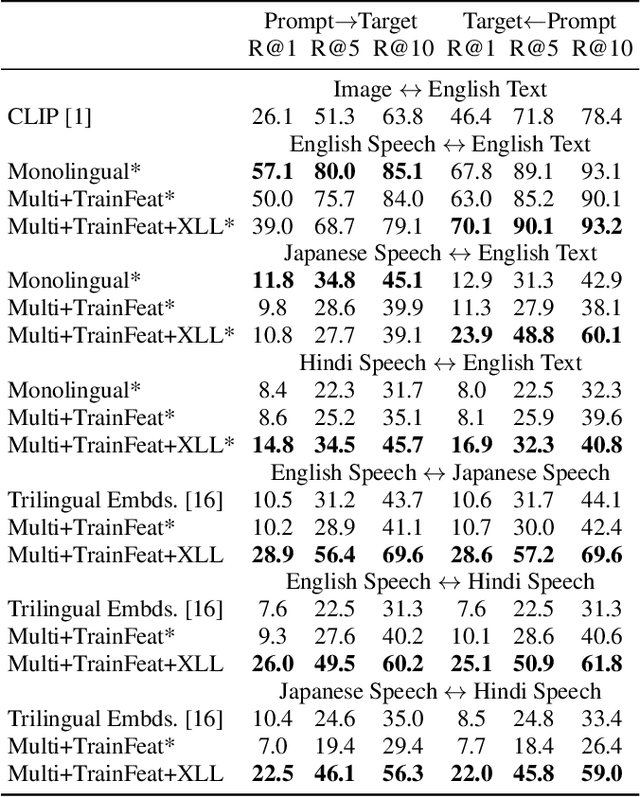
Abstract:This work investigates the use of large-scale, pre-trained models (CLIP and HuBERT) for multilingual speech-image retrieval. For non-English speech-image retrieval, we outperform the current state-of-the-art performance by a wide margin when training separate models for each language, and show that a single model which processes speech in all three languages still achieves retrieval scores comparable with the prior state-of-the-art. We identify key differences in model behavior and performance between English and non-English settings, presumably attributable to the English-only pre-training of CLIP and HuBERT. Finally, we show that our models can be used for mono- and cross-lingual speech-text retrieval and cross-lingual speech-speech retrieval, despite never having seen any parallel speech-text or speech-speech data during training.
SpeechCLIP: Integrating Speech with Pre-Trained Vision and Language Model
Oct 03, 2022



Abstract:Data-driven speech processing models usually perform well with a large amount of text supervision, but collecting transcribed speech data is costly. Therefore, we propose SpeechCLIP, a novel framework bridging speech and text through images to enhance speech models without transcriptions. We leverage state-of-the-art pre-trained HuBERT and CLIP, aligning them via paired images and spoken captions with minimal fine-tuning. SpeechCLIP outperforms prior state-of-the-art on image-speech retrieval and performs zero-shot speech-text retrieval without direct supervision from transcriptions. Moreover, SpeechCLIP can directly retrieve semantically related keywords from speech.
 Add to Chrome
Add to Chrome Add to Firefox
Add to Firefox Add to Edge
Add to Edge